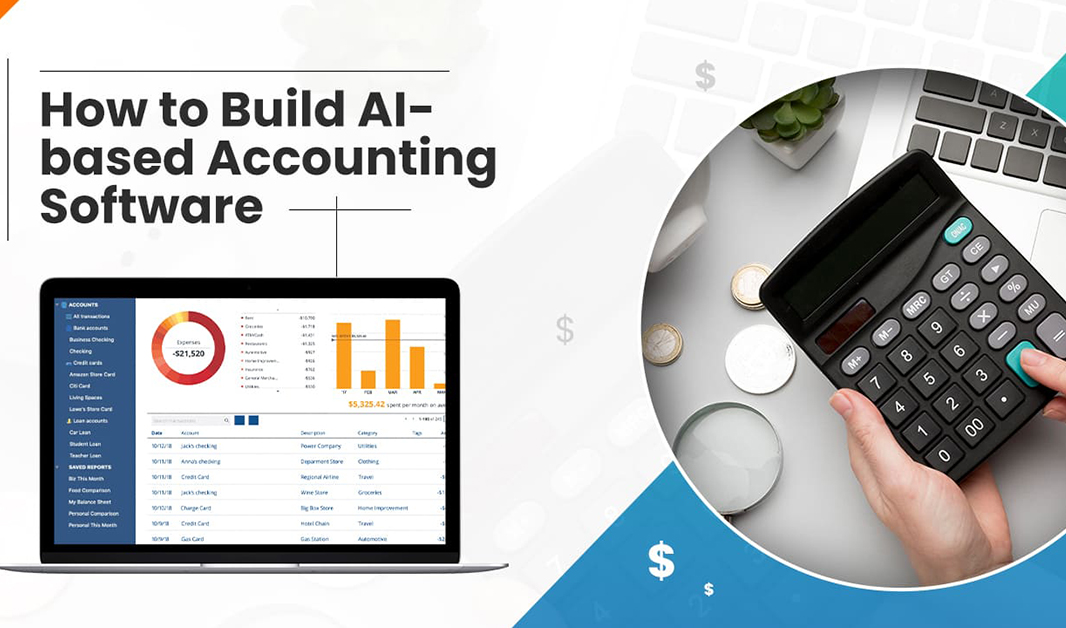
How AI Makes Accounting Software Easier for Non-Experts
AI simplifies accounting tasks, automates finance data entry, and offers guided insights, making software effortless for non-experts.
How AI Makes Accounting Software Easier for Non-Experts
Accounting has long been a daunting task for non-experts—a maze of spreadsheets, tax codes, and financial jargon that leaves many small business owners, freelancers, and entrepreneurs overwhelmed. Mistakes can be costly, and hiring professionals isn’t always feasible. Enter AI-powered accounting software: a game-changer that transforms complex processes into intuitive, error-resistant workflows. By bridging the gap between technical expertise and everyday usability, AI is democratizing financial management for everyone.
Simplifying Data Entry and Organization
One of the most time-consuming aspects of accounting is manual data entry. Traditional methods require users to input invoices, receipts, and transactions line by line, a process prone to fatigue-induced errors. AI eliminates this burden entirely. Modern tools use optical character recognition (OCR) to scan paper receipts or digital invoices, automatically extracting dates, amounts, and vendor details. Machine learning algorithms then categorize expenses—for instance, tagging a coffee shop receipt as “meals” or a software subscription as “operating costs.” This automation not only saves hours each week but also ensures consistency. A freelance graphic designer, for example, might upload a batch of receipts and watch the software sort them into tax-deductible categories without any manual input.
Demystifying Financial Jargon
Terms like “accrual accounting” or “depreciation schedules” can alienate those without formal training. AI addresses this by translating complex concepts into plain language. Imagine asking a chatbot, “How much did I spend on marketing last quarter?” and receiving an instant breakdown without navigating menus or reports. Generative AI goes further by explaining financial metrics in context. If cash flow dips, the software might note, “Your November expenses exceeded income due to holiday inventory purchases—consider adjusting order volumes next month.” These conversational interactions make financial data accessible, empowering users to make informed decisions without needing an accounting degree.
Real-Time Error Detection and Fixes
Non-experts often fear making mistakes that could trigger audits or tax penalties. AI acts as a safety net by flagging discrepancies in real time. For instance, if a user accidentally logs a 5,000paymentas5,000paymentas50,000, the software detects the outlier and prompts a review. Similarly, AI cross-references transactions against bank statements to highlight mismatches, reducing reconciliation headaches. A bakery owner might receive an alert like, “Invoice #2032 exceeds client’s credit limit—confirm payment terms.” These proactive warnings prevent small errors from snowballing into costly crises.
Guided Compliance and Tax Preparation
Tax laws are notoriously complex and ever-changing. AI accounting tools stay updated on regional regulations, automating tax calculations and flagging deductible expenses users might overlook. During tax season, the software can generate pre-filled forms, export records for filings, and even simulate different scenarios to minimize liabilities. A solopreneur in India, for example, could rely on AI to apply GST rates correctly or claim eligible deductions under Section 80C, all without consulting a tax advisor.
Predictive Insights for Smarter Planning
Beyond organizing past data, AI helps non-experts plan for the future. By analyzing income patterns, seasonal trends, and expense cycles, the software generates forecasts like, “Based on current trends, you’ll have a cash shortfall in six weeks—delay non-urgent purchases.” Some tools offer “what-if” simulations, allowing users to model outcomes of hiring a new employee or launching a product. A boutique owner might use these insights to time inventory orders or negotiate better payment terms with suppliers.
Seamless Integration with Everyday Tools
AI accounting platforms integrate with tools non-experts already use, such as banking apps, payment gateways, or e-commerce platforms. Transactions sync automatically, eliminating the need for manual imports. For a Shopify seller, daily sales data flows directly into the accounting system, where AI categorizes revenue, fees, and refunds. This interoperability creates a unified financial ecosystem without requiring technical setup.
Building Confidence Through User-Friendly Dashboards
Visual learners thrive with AI-driven dashboards that replace spreadsheets with graphs, heatmaps, and progress bars. A real-time profit-and-loss chart or an overdue invoice tracker lets users grasp their financial health at a glance. Interactive features allow drilling down into specifics—clicking on a “marketing expenses” bar might reveal a breakdown of social media ads versus print campaigns. These interfaces mirror the simplicity of consumer apps, making accounting less intimidating.
The Future: AI as a Collaborative Partner
Emerging advancements like voice commands and contextual assistants are pushing usability further. Imagine dictating, “Log my Mumbai client payment,” or asking, “Can I afford a new laptop this month?” and receiving a tailored analysis. As AI grows more conversational, it will feel less like software and more like a knowledgeable colleague guiding users through financial decisions.
The Conclusion:
AI-powered accounting software isn’t just simplifying tasks—it’s rewriting the rules of financial management for non-experts. By automating grunt work, clarifying complexities, and offering proactive guidance, these tools empower users to take control of their finances with confidence. What once required hours of study or expensive consultants now fits into a few clicks and natural-language queries. In a world where financial literacy is power, AI is the great equalizer, ensuring that anyone—regardless of their background—can master the numbers that drive their success.